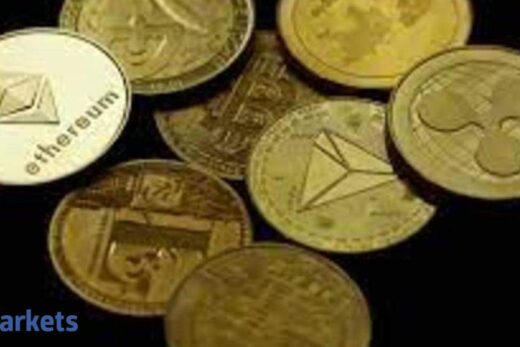Federal Reserve officials continued to project near-zero interest rates at least through 2023, while upgrading their economic outlook to reflect greater optimism over the US recovery from Covid-19 amid a surge in Treasury yields.
“Following a moderation in the pace of the recovery, indicators of economic activity and employment have turned up recently, although the sectors most adversely affected by the pandemic remain weak,” the Federal Open Market Committee said in its policy statement Wednesday. “Inflation continues to run below 2%.”
Seven of 18 officials predicted higher rates by the end of 2023 compared with five of 17 at the December meeting, showing a slightly larger group who see an earlier start than peers to the withdrawal of ultra-easy monetary policy, according to the FOMC’s quarterly economic projections also issued Wednesday.
 Bloomberg
BloombergThe Fed expects that a bump in inflation this year will be short-lived. Officials saw their preferred measure of price pressures slowing to 2% next year following a spike to 2.4% in 2021, according to the projections. Excluding food and energy, inflation is forecast to hit 2.2% this year and fall to 2% in 2022.
Massive fiscal support and widening vaccinations that will help reopen the economy have buoyed investor expectations for rate increases and inflation, propelling Treasury yields higher as the Fed keeps adding stimulus.
Wednesday’s decision was unanimous. Fed Chair Jerome Powell will hold a virtual press conference at 2:30 p.m. in Washington.
Asset Purchases
US central bankers left asset purchases unchanged at $120 billion a month and repeated that this pace would be maintained until “substantial further progress” is made on their employment and inflation goals.
The target range of the benchmark federal funds rate was also kept at zero to 0.25%, where it’s been since last March.
Powell and his colleagues met as the economy continues to improve. Job gains picked up last month and President Joe Biden signed an additional $1.9 trillion of pandemic aid into law on March 11. Vaccinations continue apace, allowing states to start easing lockdown restrictions that could release a torrent of consumer spending.
The economy remains far from the Fed’s goals, though. Even with 379,000 jobs added to payrolls in February, 9.5 million fewer Americans have jobs compared with a year ago and inflation remains well below the Fed’s 2% target.
Still, prospects for stronger growth have ignited some concern about higher inflation, contributing to a rise in 10-year Treasury yields in recent weeks. Powell told lawmakers in testimony last month that the economy is still has a long way to go before there’s any risk of overheating.
They also upgraded forecasts for economic growth and the labor market, with the median estimate for unemployment falling to 4.5% at the end of 2021 and 3.5% in 2023, while gross domestic product was seen expanding 6.5% this year, up from a prior projection of 4.2%.
Christopher Waller, who joined the Board of Governors in late December, contributed projections for the first time this month.



